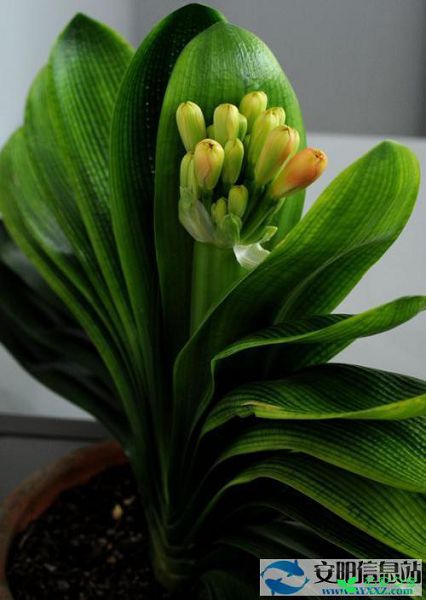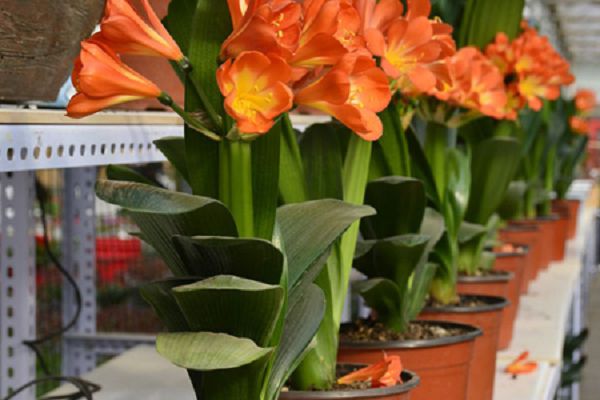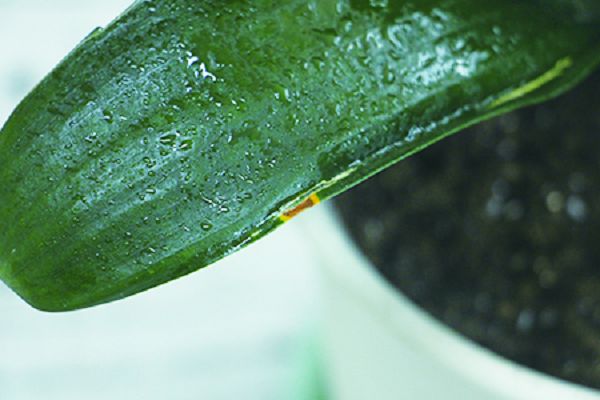How to remedy the rotten root of gentleman orchid? How to turn to hydroponic cultivation of Magnolia?

How to remedy the rotten root of gentleman orchid?
1. Eliminate watering
Reason: if you water the orchid too much at a time or too often, it will lead to stagnant water in the soil. The emergence of stagnant water will make the oxygen content in the soil low, and once the oxygen content is low, the root cells of Cymbidium will change from aerobic respiration mode to anaerobic respiration mode, producing ethanol. If ethanol cannot be excreted in real time, it will lead to rotting roots of Cymbidium.
Management method: put the flowerpot high and put it in a place with better ventilation conditions, wait for the moisture in the soil to evaporate, and then eliminate the amount and frequency of watering. If the environment is more serious, you can dig up the plant, cut off the broken roots, change half of the soil and replant it.
2. Change the soil
Reason: raise magnolia to use highly permeable soil, if the lack of fluency of the soil atmosphere, it will also make the oxygen concentration in the soil very low, resulting in rotting roots.
Treatment method: take the plant out of the soil, then plant it into a new breathable soil and maintain it step by step.
3. Scientific fertilization
Reason: if the magnolia is given an unmatured fertilizer, the fertilizer will be decomposed by microbes in the soil. In this process, a large amount of heat will be released, which cannot be dissipated, which will affect the root system of the plant.
Treatment method: use a large amount of cold water to irrigate the magnolia to wash away the fertilizer, or simply replace it with new soil, and then apply fertilizer and maintain it scientifically.
The Culture method of Magnolia
1 soil: the original place of Magnolia is under the trees of the high-altitude forests in southern Africa, and its roots are rooted in the decaying leaf layer accumulated for many years. The magnolia should be cultivated with loose and fertile neutral or weakly acidic humus soil, and the cultivation soil can be mixed with 65% humus soil, 20% net sand and 15% fine furnace ash. The relative humidity of the soil should be about 40%. If the soil is hardened and the drainage is not smooth, it will lead to rotting roots. When changing soil in spring, it is best to buy special soil for planting. The special soil of Cymbidium is rotten leaf soil, which is very suitable for the growth of Cymbidium.
(2) fertilization: apply solid fertilizer once to Magnolia in winter, less nitrogen fertilizer, more phosphorus fertilizer and potassium fertilizer. Eggshell powder and retting fish water is a good phosphate fertilizer, bran ash and soot are easily available potash. Nitrogen, phosphorus and potassium compound fertilizer can also be applied to promote the germination of more new plants and leaves. Fertilization must be appropriate, do not apply thick fertilizer and unfermented raw fertilizer, otherwise, it is easy to cause leaf tip scorch or rot. In winter, if the new leaves are spotted and the roots are yellow, it means that there is too much fertilization, while the narrow, thin and light color of the new leaves is a sign of lack of fertilizer.
3 watering: the soil should not be too dry or too wet, every time it must be watered thoroughly, and some more should be watered after budding. Can be every 20 days or so, a joint watering application of fermented bean cake water, fresh fish water and horseshoe water, watering and fertilization together. Watering should be controlled when the room temperature is low to prevent the basin soil from being too wet, which will cause the rotten roots of the plant to die, but it can not make the basin soil too dry.
4 Heat preservation: the suitable temperature for the growth of Cymbidium in winter is 15 ℃ 20 ℃, which should not be lower than 10 min. The temperature should be kept at about 18 ℃ after scurrying, and the temperature difference between day and night is about 10 ℃ at most, otherwise the flower arrow will be caught if it does not grow to a proper height, and it will easily form a "clip arrow". The magnolia should be moved indoors when the outdoor temperature is lower than 10 ℃ at night. When the indoor temperature is lower than 10 ℃, in addition to covering the surface of the basin soil with a layer of 1 cm thick charcoal powder, the flowerpot should also be placed in the indoor sunny warm place. When the indoor temperature is very low, cover the film on the flowerpot to raise temperature, but the temperature in the cover should not exceed 25 ℃. If it exceeds, it should be ventilated in real time.
5Illumination: the magnolia is easy to bloom under the condition of short day light. If the sun is exposed to the scorching sun, direct sunlight in summer will get sunburn and inhibit growth. From May to September every year, it should be cultured in the shade shed or in the semi-shade condition without direct sunlight. But the longer the sun shines in winter, the better. Weak light can prolong the flowering period when flowering. It likes to be warm and cool, and avoids severe cold and heat. It generally grows well at a temperature of 18 ℃ and 20 ℃, and stops growing below 5 Mel. After the orchid enters the room, the light is limited and needs to be adjusted by manually moving the flowerpot. Under normal circumstances, flowerpots should be placed indoors in a sunny place during the day so that the sun can shine on the plants. Before blooming, the flowerpot should also be placed under the fluorescent lamp to replenish the light at night. Because the two rows of leaves of Cymbidium are opposite, if the light is in one position for a long time, it will make the leaves grow unevenly and affect the ornamental effect. Therefore, when adjusting the light, we should pay attention to the direction of the leaves and change to the sunny side every 10 days or so. There are two ways to arrange the flowerpot indoors: one is to make the leaf parallel to the sunny window, and the other is to make the leaf perpendicular to the sunny window, and the effect of the latter is better than the former.
(6) prolonging the flowering period: the flowering period of Cymbidium is mostly from December to March of the following year. The way to prolong the flowering period is to place the flower in a dark place when it is about to bloom, properly control the watering, and keep the temperature at 8 ℃ 12 min. In this way, the florescence can be prolonged by 10 mi for 20 days.
How to turn to hydroponic Culture of Magnolia in soil Culture
1. Steps
The first thing we need to do is wash the rotten root, then sterilize it with potassium permanganate, then air-dry it, cut the plant to the right height and put it in a cut-off mineral water bottle. The requirement is to expose the plant to 2/3 of the outside of the bottle, then fill it with one or two centimeters of clean water. New roots will grow in half a month or so. Before the root comes out, the water should be changed once a week. If you have white teeth, you can change it every 15 days. When the root of the plant grows to three to five centimeters, it can be moved to the building base. If you want to do hydroponic culture, you should give it water when its roots grow one or two centimeters, and when it grows to five centimeters, it will all be replaced with a nutrient solution. The advantage of the nutrient solution is that its leaves grow exuberantly and will not become deformed.
2. Container
If you want to grow in water, you must first choose the right vessel. It is best to use transparent glass, the seedlings only need glass cans, if the plants are larger and more, you can use a water culture box or goldfish tank.
3. Nutrient solution
There are two kinds of nutrient solution it needs, one is organic and the other is inorganic. Both of them can be set by themselves, the former is rich in ingredients, but the content is not high, the latter is less, but the fertilizer effect is relatively large. The two can be used together so that they can learn from each other, while for single use, the former is applied once every five days and the latter once a week.
4. Water
You can't use tap water directly. You need to bask in the water for two or three days and let the bleach in it settle down. The sediment inside will change from strip to ball, and the color should be green. When you put water in, you can cover the root, but not the false bulb. If the water is too low, the plant itself will get very little water, but too deep will probably cause its roots to rot. If the water quality changes, and there is no oxygen or fertilizer, the water should be changed, otherwise the roots will turn black and yellow.
Related
- Is the orchid suitable for indoor use? Is it good for the body?
- How to prevent the empty root of orchids?
- What to do after the crab claw orchid is withered?
- Why are the leaves of orchids always yellow? Fertilizing and watering.
- Can the root of the gentleman orchid be saved if it is rotten?
- Diagnosis and treatment of cotton-blowing beetle insects in Cymbidium
- There is a way for a gentleman's orchid to rot.
- What is the most suitable temperature and humidity for the orchid?
- How to raise a gentleman's orchid? Cultivation techniques of Cymbidium
- How to prepare the nutritive soil for the cultivation of Cymbidium



